Early data shows strong signs that the Polar Vortex is likely to be weaker than normal in the Winter of 2025/2026. A weaker Polar Vortex in the stratosphere usually means a weakened or disrupted jet stream below, which increases the chance of a more dynamic Winter pattern over the United States, Canada, and Europe.
Three major global factors are now emerging to create an almost “perfect storm” scenario for a weak Polar Vortex in the Winter season of 2025/2026.
Based on the overall state of these major global factors, we will see how they are projected to evolve and how they can impact the Polar Vortex and the large-scale Winter circulation in 2025/2026. We will look at each of these factors and how they shape our weather, but first, we will quickly look at why the Polar Vortex is a key figure in this upcoming Winter story.
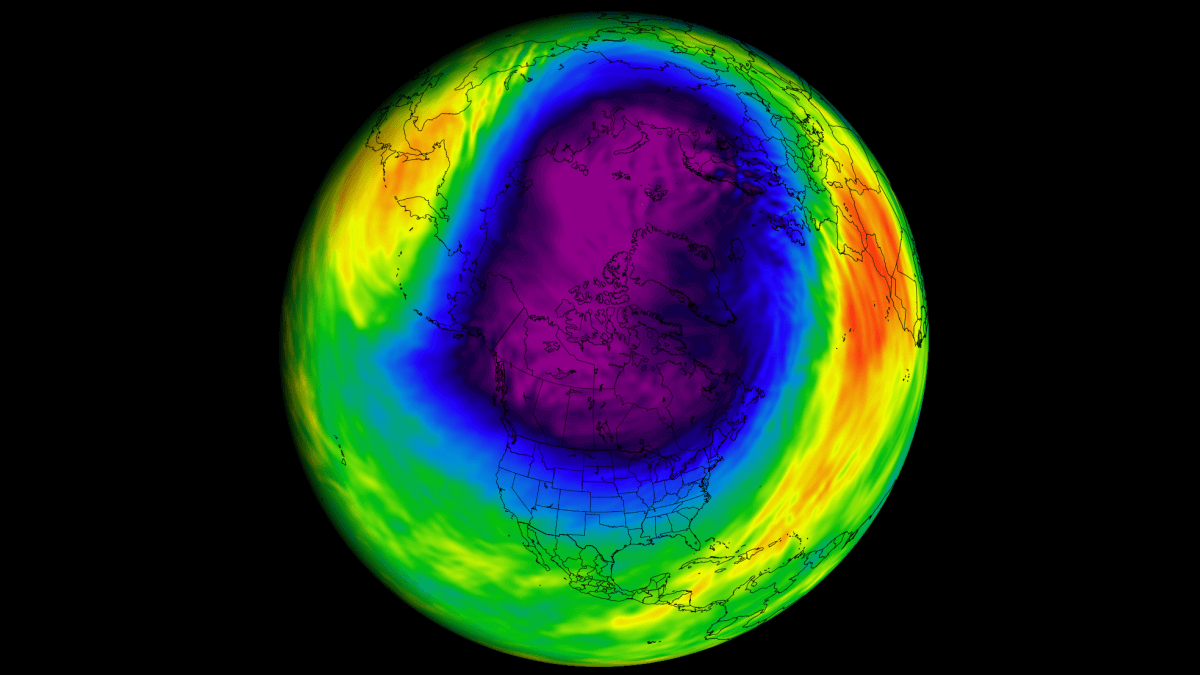
THE WINTER POLAR VORTEX
To understand what the Polar Vortex is and what it does, it’s usually best to visualize it. In simple terms, it is just a name that describes the broad winter circulation over the northern (and southern) hemispheres.
Below is a 3-dimensional image of the Polar Vortex. The vertical axis is greatly enhanced for better visual presentation. You can nicely see the actual structure of the Polar Vortex, connecting down to the lower levels, the pressure systems, and the winter weather patterns.

The Polar Vortex extends high into the atmosphere. The lowest level is called the troposphere, where all weather events occur. But above that, we have the Stratosphere, a deep and dry layer that is home to the ozone layer.
For this reason, we separate the entire Polar Vortex into an upper (stratospheric) and a lower (tropospheric) part. They both play their role differently, so we monitor them separately. But it is also very important if they are properly connected. Image by NOAA-Climate.
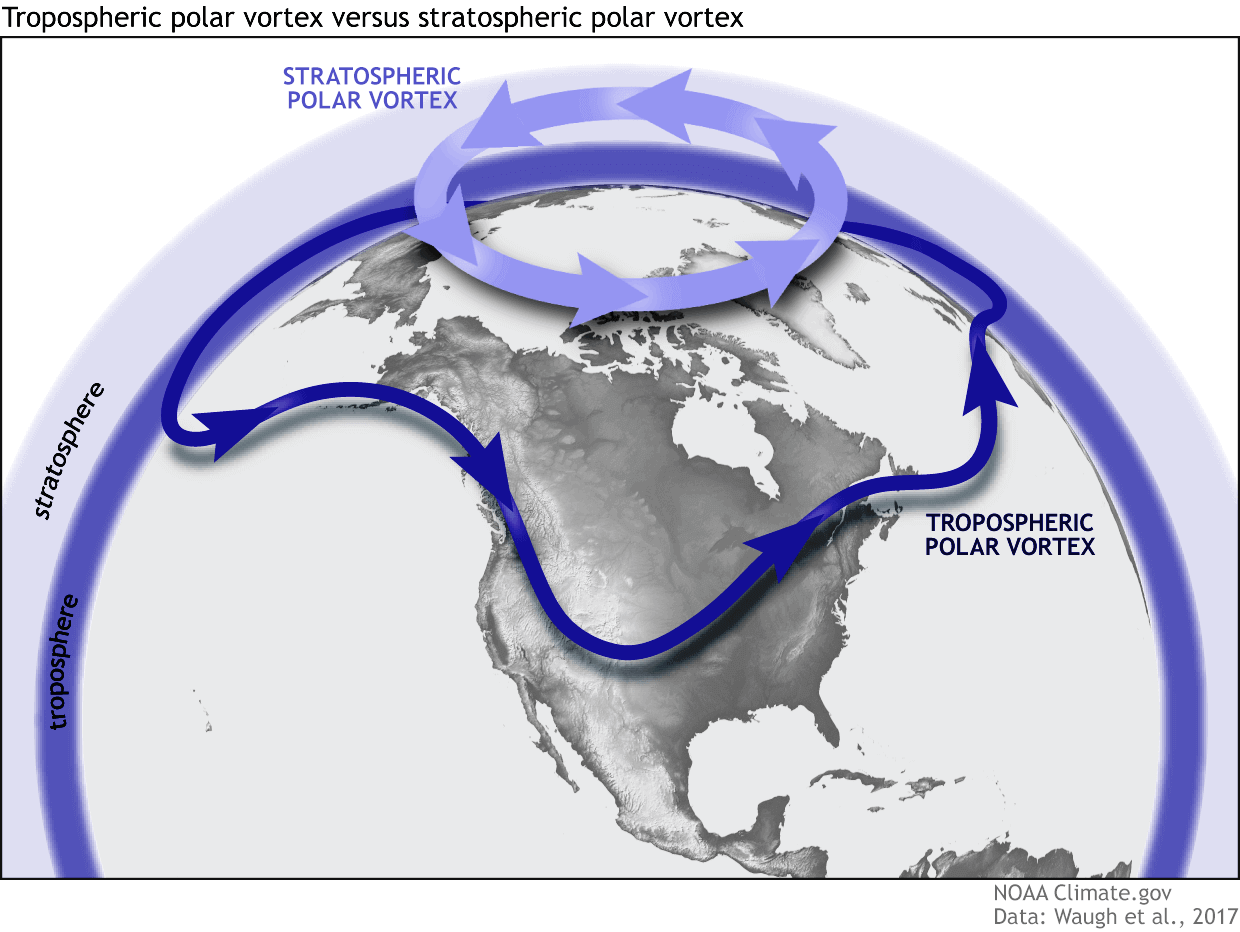
The upper (stratospheric) part is more circular and symmetrical as it spins higher above the ground, with fewer obstacles in its flow.
But, the lower structure of the Polar Vortex is much more uneven and regularly disrupted. That is due to the influence of the terrain/mountains and strong pressure systems acting as obstacles.
We must monitor the state of the Polar Vortex, as it has a profound impact on our daily weather, even more so in winter. We mainly separate the Polar Vortex into two different modes:
A strong/stable Polar Vortex usually means strong polar circulation and jet stream. This contains the colder air in the far north, creating milder conditions for most of the United States.
In contrast, a weak Polar Vortex creates a disrupted jet stream pattern and a strong weather response. As a result, it has a harder time containing the cold air, which can now more freely escape from the polar regions into the United States or other mid-latitude regions.
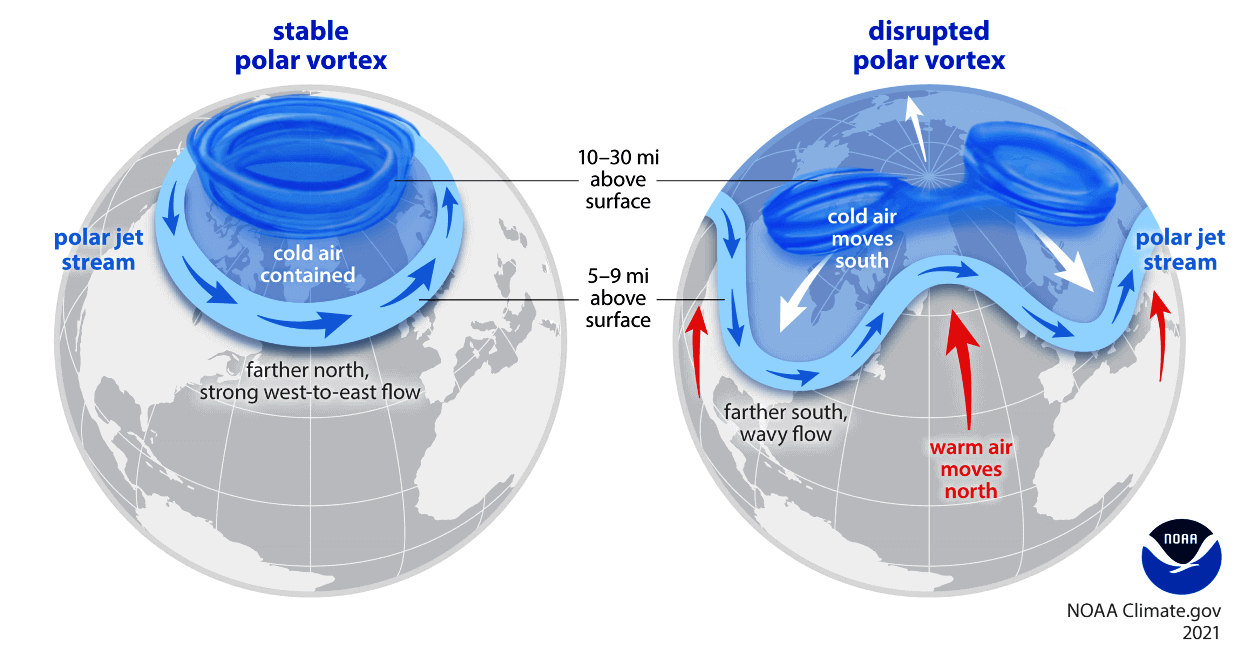
So, if you want a colder and snowier Winter, your best bet is a weak Polar Vortex. In nature, a weak Polar Vortex essentially means a breakdown of the stratospheric Polar Vortex.
That is usually achieved by increasing the pressure or temperature in the polar Stratosphere. We call such an event “Sudden Stratospheric Warming”. As the name suggests, it is a rapid temperature increase in the Stratosphere, and we had such an event this Spring.
But not every disruption is a major Stratospheric Warming event. Even smaller disruptions can influence the Polar Vortex and the winter weather at the surface. And there are many ways that the Polar Vortex can be weakened.
For Winter 2025/2026, we are currently looking at three factors that have a known impact on the Polar Vortex:
- ENSO – Cold anomalies or a weak La Niña
- QBO – Stratospheric winds
- Sea-Ice loss
We will quickly go over each factor, starting down low on the ocean, going up into the atmosphere, and connecting it all over the North Pole.
IMPACT FROM THE OCEAN SURFACE
The first factor is the ENSO, which is short for “El Niño Southern Oscillation.” This region of the equatorial Pacific Ocean changes between warm and cold phases. Typically, there is a phase change every 1-3 years, but some events can last for several years.
The cold phase is called La Niña, and the warm phase is called El Niño. We are currently in a neutral state, with some stronger signs emerging for a possible weak La Niña for Winter 2025/2026.
Below is the ocean temperature forecast for late autumn and early winter from the NMME model. You can see an area of cold anomalies over the tropical Pacific, which is the forecasted weak La Niña. From this forecast, it is expected to have an impact on the winter atmosphere.
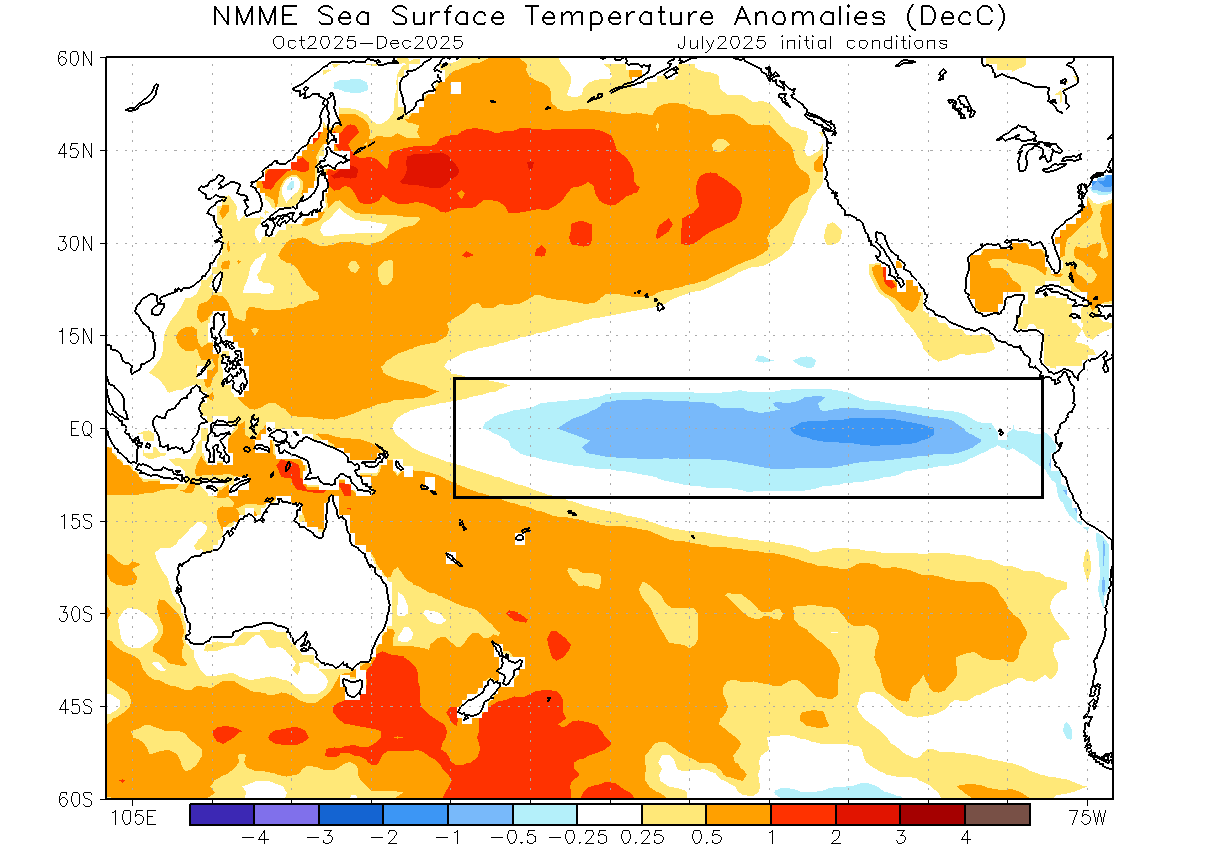
Historically, a La Niña winter has around a 60-75% chance of producing a Stratospheric Warming Event (SSW). It has produced them in the past and also in the more recent winters. The image below shows the typical SSW event frequency by month and by the ENSO event.
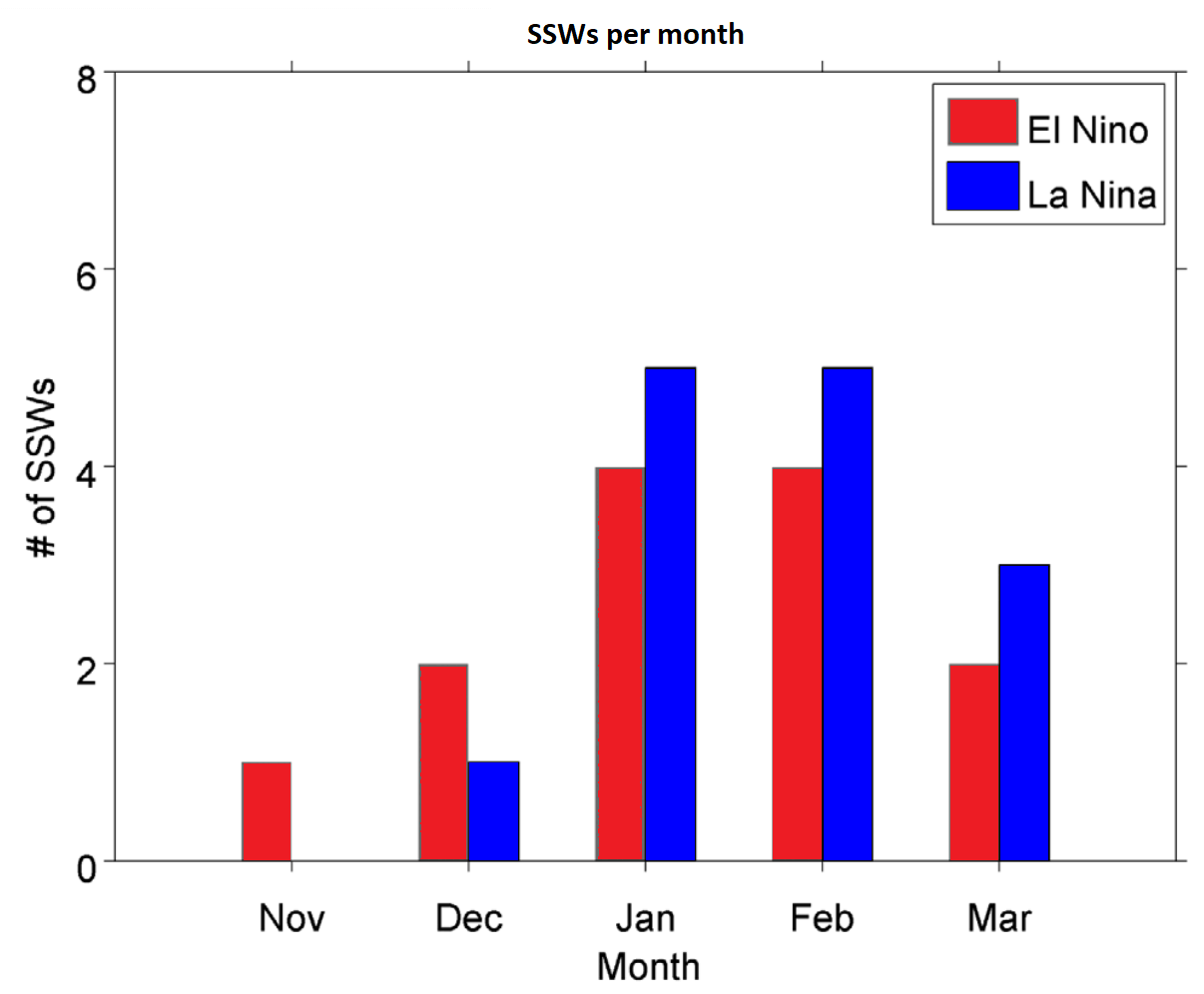
As you can see, a La Niña phase has a higher chance of producing a Polar Vortex collapse event. It also produces one a bit later in Winter, which is what we have seen this winter. Overall, this means that a La Niña event is favorable for a weaker Polar Vortex.
Below is an image that shows typical winter pressure anomalies over the western hemisphere for each ENSO phase. The third example shows the best pressure pattern to weaken the Polar Vortex in winter and start a warming event in the stratosphere.

As you can see, the typical La Niña pattern is overall a bit more favorable for a weaker Polar Vortex. This means that it can be easier for winter weather patterns to be disrupted and bring colder weather and snowfall to the United States and Europe.
This is just the first factor that currently hints at the potential of a weaker winter circulation due to the Polar Vortex. For the next one, we have to go up into the atmosphere and across the whole globe.
HIGH ATMOSPHERE WIND ANOMALY
Just like in the ocean, we again have a region that alternates between a positive and a negative phase. But instead of temperatures, we are observing winds or rather their direction. This is called the Quasi-Biannial Oscillation, or simply QBO.
The QBO is a regular variation of the winds high above the equator in the Stratosphere, shifting between easterly and westerly (zonal) winds. Strong winds in the stratosphere travel in a belt around the planet at the equator. And around every 17 months, these winds completely change direction.
Below is a graph that shows the zonal wind anomalies for the past 50 years at around 24km/15mi altitude over the Equator. It nicely shows just how regularly this wind shift really is. It is like watching the heartbeat of the atmosphere, which is an often-used analogy for the QBO.
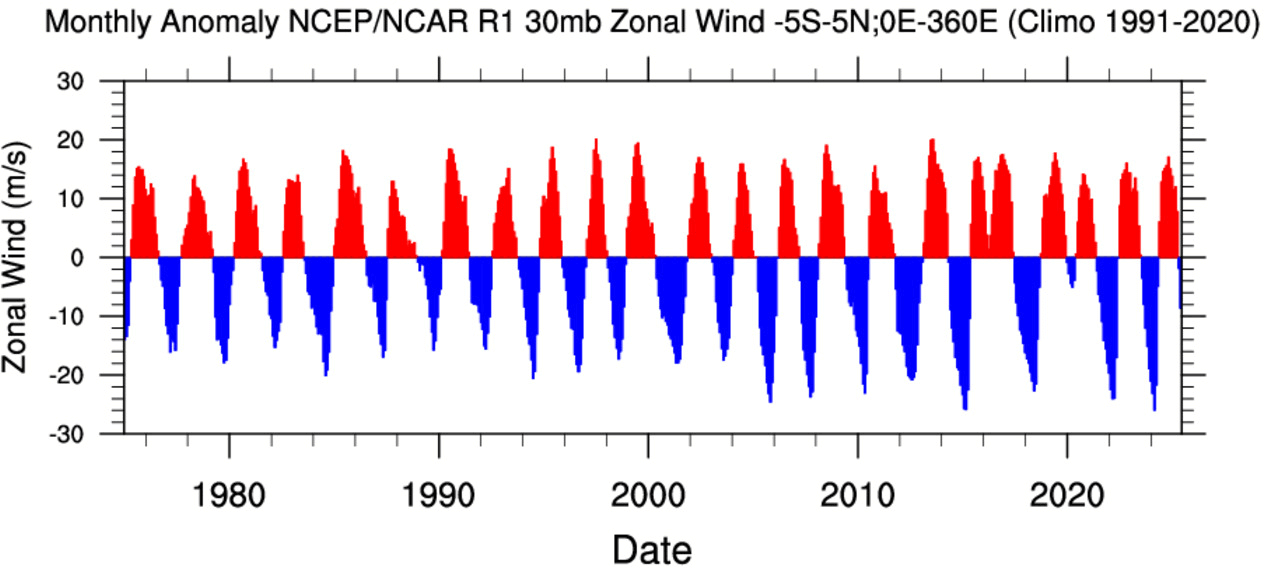
Looking more closely at the past 3 years, we can see how each phase descends over time through the stratosphere. A negative/easterly phase was active in 2023/2024. It was followed by another positive QBO phase last winter. Currently, a new easterly phase is descending from above for 2025/2026. The image below is from a NASA analysis.
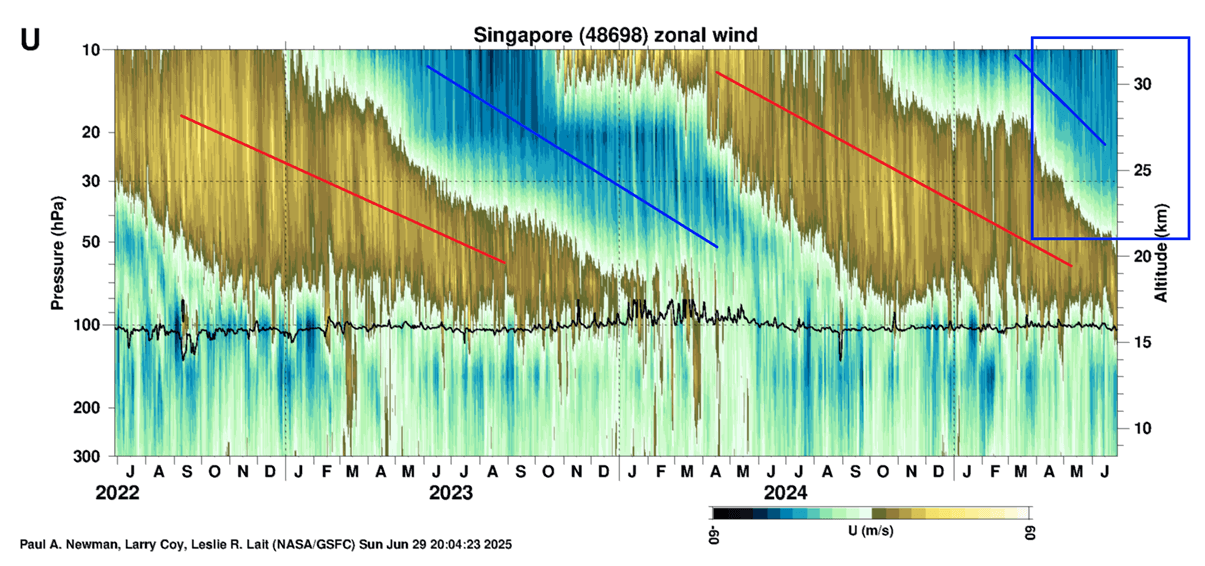
A daily radiosonde analysis from Singapore also shows the wind direction directly above the tropics. It reveals the easterly winds around the 10-50mb level, confirming the easterly/negative QBO phase is currently active. It is in the early stages and will continue to strengthen and stabilize around 30mb as it descends towards winter.
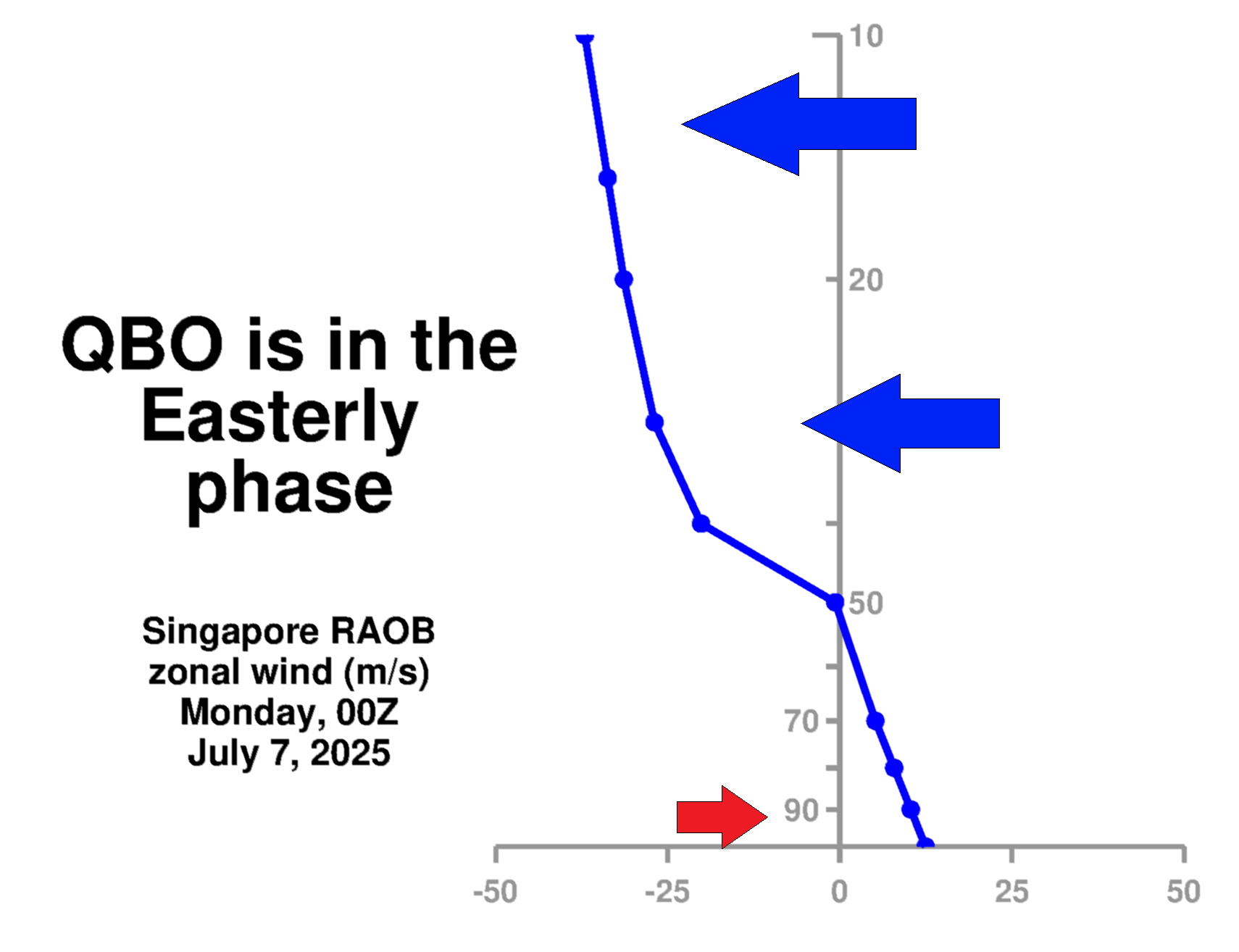
Looking at the latest zonal wind analysis at the 10mb level (32km/20 miles), we can see the easterly wind anomaly over the equator. This is the east/negative phase of the QBO that is expected to evolve further and descend lower as we head into late fall and winter.
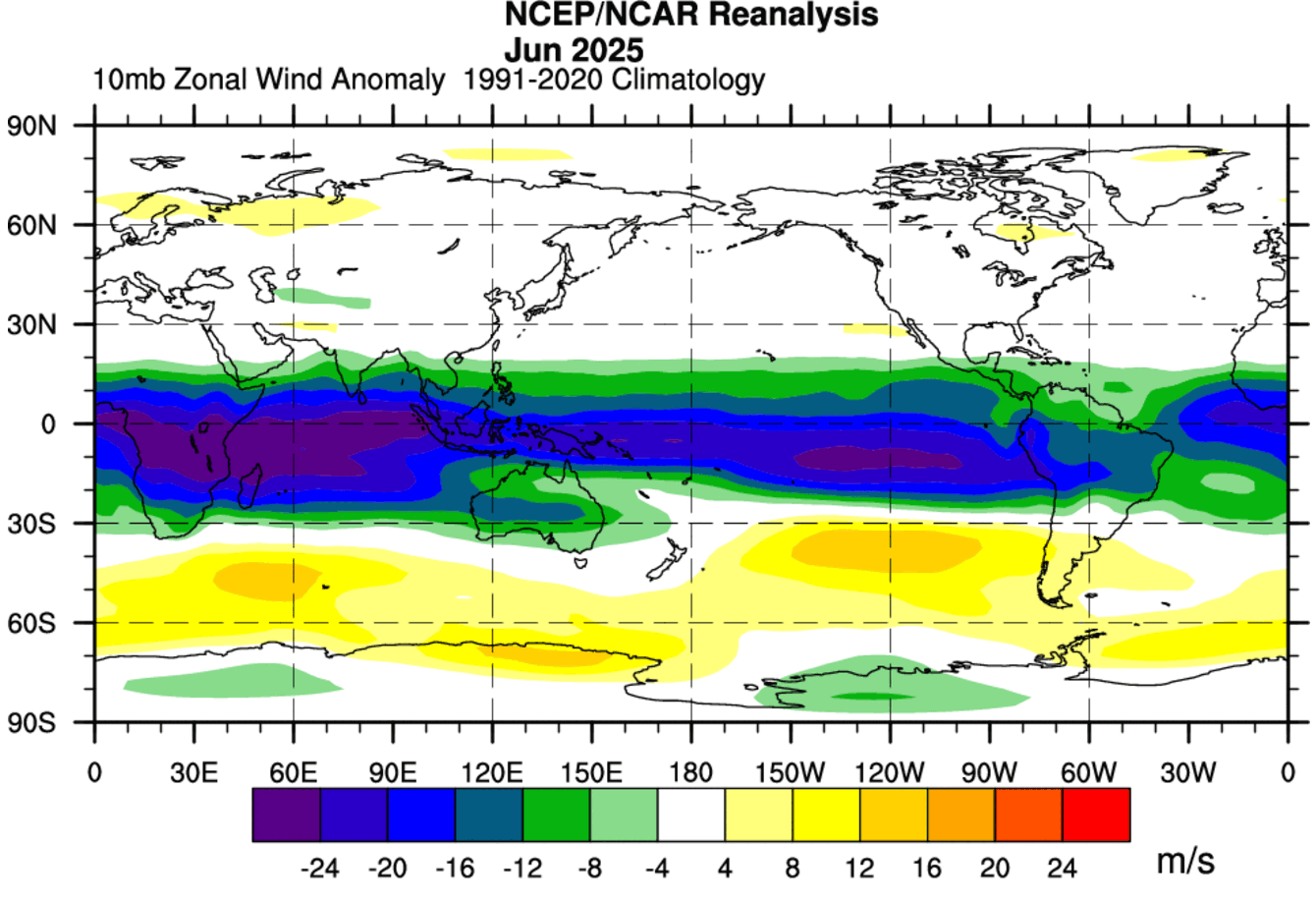
There are several reasons why/how QBO can influence our Winter weather. One very important aspect is, of course, the Polar Vortex, which is why we even talk about the QBO in this article. The image below shows the connection between the QBO and the Polar Vortex in the December-January winter period.
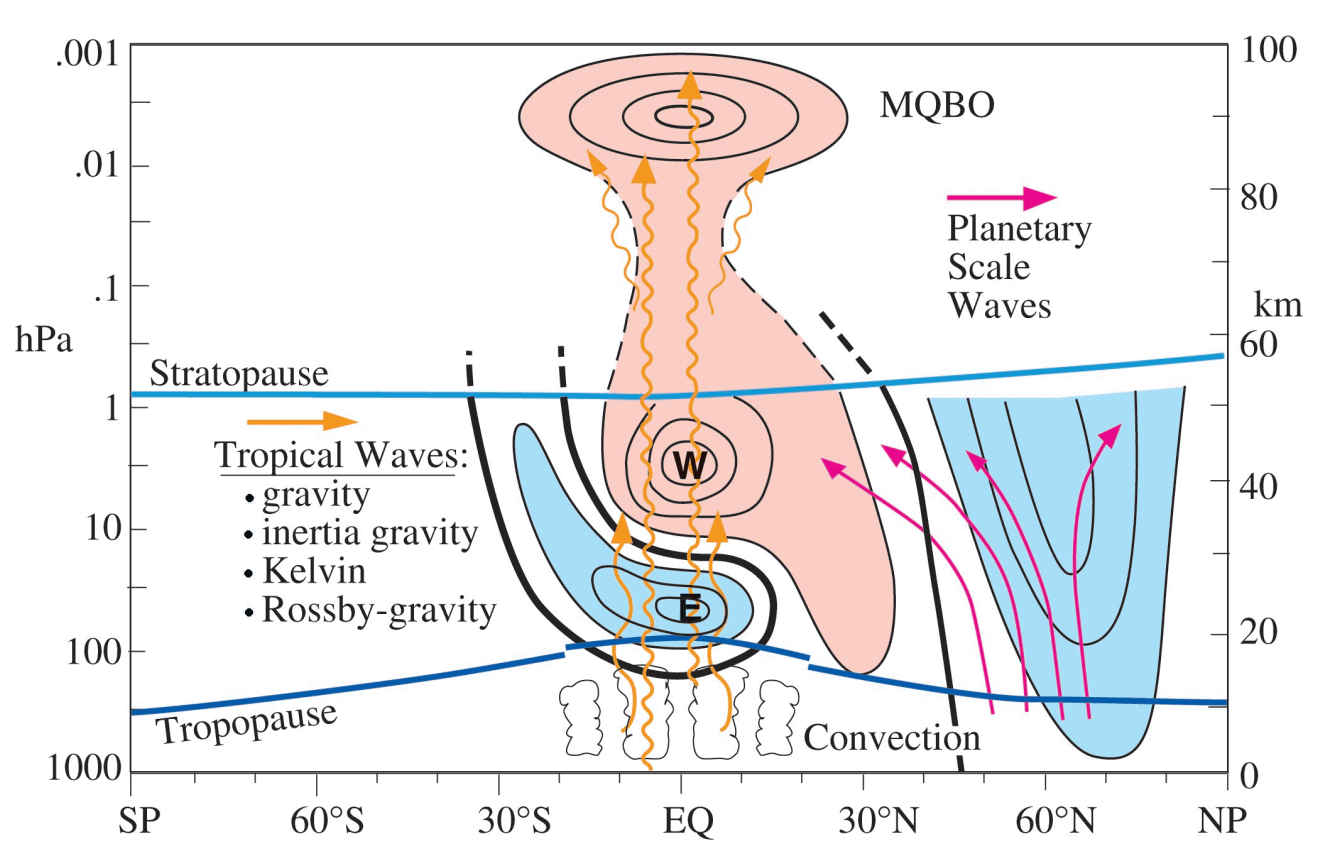
It might seem complicated, but the main takeaway is that the QBO is deeply connected to the atmospheric circulation and connects with the overall tropical forcing, including the ENSO. You could say that it can also help with the “communication” between the ocean and the Polar Vortex.
During an easterly QBO, the stratospheric wind profile is more favorable for the upward propagation of planetary (Rossby) waves from the troposphere into the stratosphere. That disrupts and weakens the Polar Vortex, making it more prone to collapse and disrupting the weather patterns below.
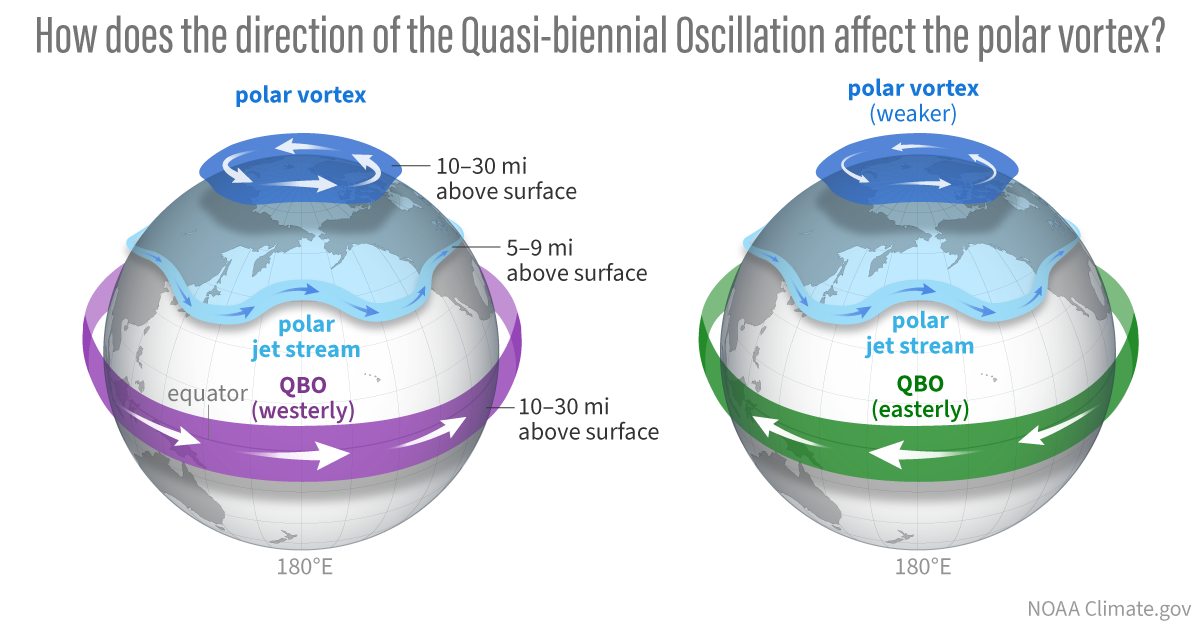
Being over the Equator, the QBO is directly connected to the higher levels of the atmosphere and the overall atmospheric circulation. It also plays a major role in the third factor for a weak Polar Vortex and potentially a colder 2025/2026 winter.
LOW POLAR ICE AND WEAK POLAR VORTEX
The third factor is the sea-ice extent over the polar regions. The northern icecap plays an important role in pressure patterns, energy balance, planetary (Rossby) waves, and many more. This makes it an obvious candidate to directly relate to the Polar Vortex just above it.
In a very recent study, it was uncovered that two regions play an important role in the winter strength of the Polar Vortex. The Barents/Kara Sea (BKS) and the Sea of Okhotsk (SOK). Below is an image from that study that shows the impact each of these regions has on the winter Polar Vortex with heavy ice loss.
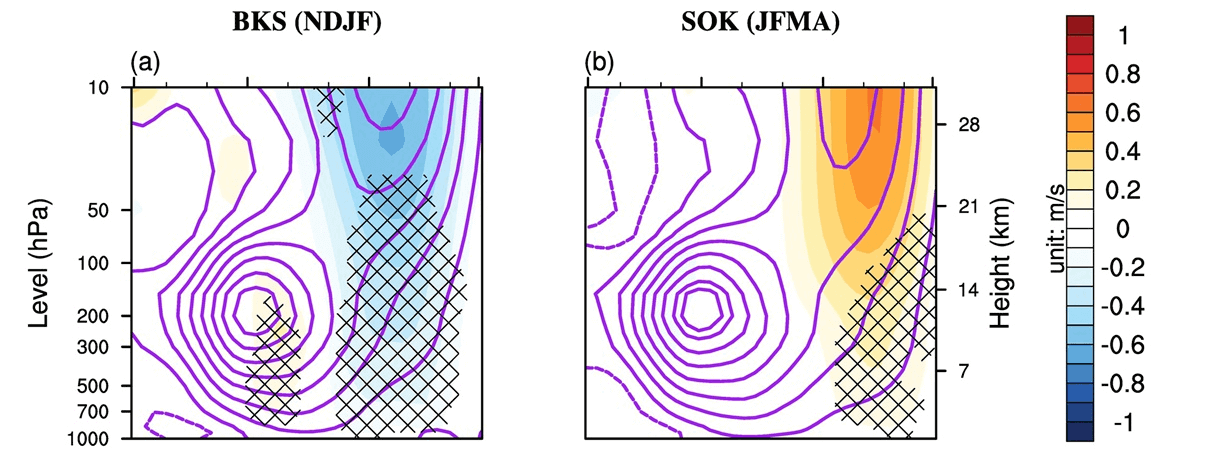
You can see a very opposite look, where the ice loss in the Barents/Kara region creates a weaker Polar Vortex, while ice loss in the Okhotsk causes a stronger Polar Vortex. This is because each region has a different impact on the planetary (Rossby) waves and their energy release into the stratosphere.
So, ideally, for a weaker Polar Vortex and potentially a colder winter, you would want to see less ice in the Barents/Kara region and more ice in the Okhotsk region. We can look at a special image to see the latest extent in each region.
As you can see below, the latest daily rank shows very low sea-ice extent in the Barents and Kara regions, and almost record high in the Okhotsk region. We are not yet in the main melt period, but this is currently a textbook situation for a weaker Polar Vortex to emerge for Winter 2025/2026.
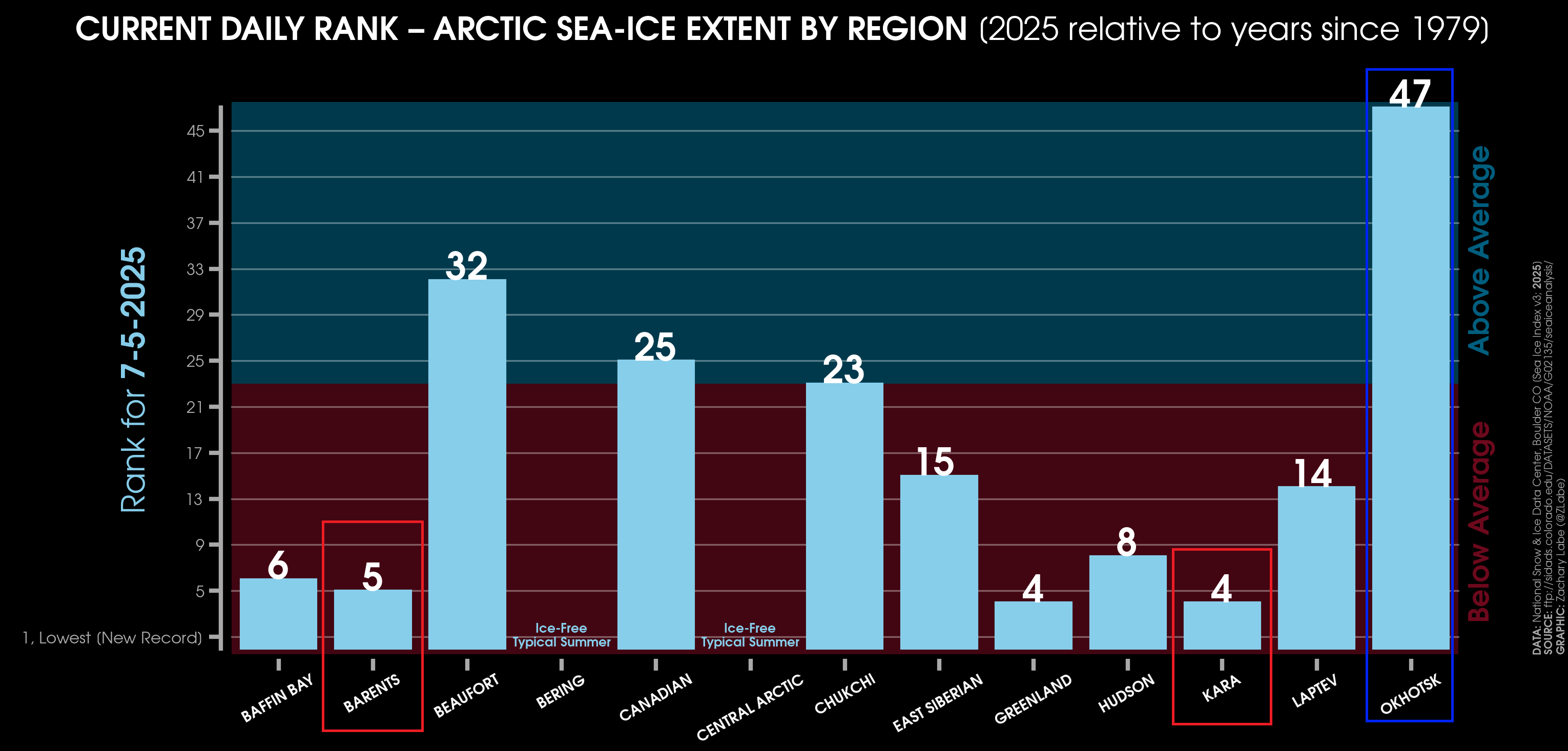
The study found another factor between the ice and the Polar Vortex, and it is the QBO that we showed in the previous segment. As the image below shows, the data found that the sea-ice weakening effect on the Polar Vortex is much stronger during an easterly QBO, which is forecast for 2025/2026.
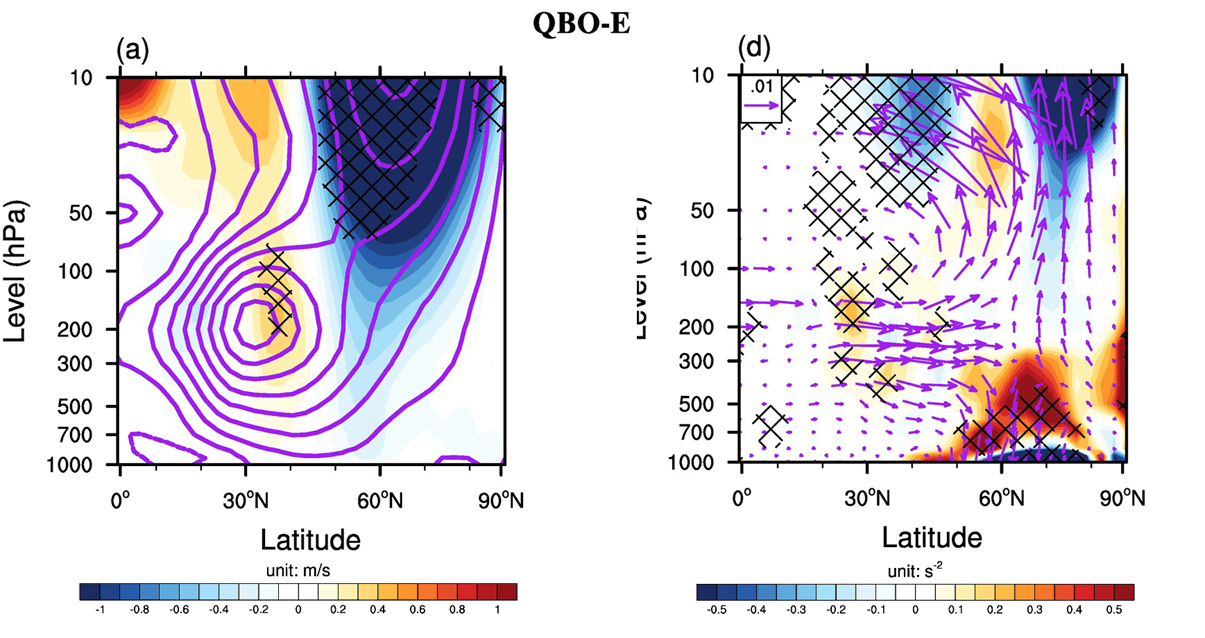
The right part of the image shows that the easterly QBO really boosts the vertical transport of energy into the stratosphere. That disrupts the Polar Vortex, like dropping large boulders into a river, creating obstacles and changing its flow, or even fully stopping it.
This shows really nicely how the whole global weather system is connected at many different levels, and each large-scale factor can play a role in many different ways.
We also made an analysis of the low ice extent connection with the winter Polar Vortex. Below, you can nicely see that in low ice years, the Polar Vortex is weaker in the stratosphere, with higher pressure. This matches all the data above and adds another important factor to the trinity of global factors that are in favor of a colder winter 2025/2026.

We can also see the same signal if we look at the temperature connection. The temperatures in the stratosphere tend to be higher in a weak Polar Vortex. That can often lead to a major Stratospheric Warming event (SSW), which can collapse the Polar Vortex, and create a blocking pattern for the United States and Europe that brings along cold air and snowfall.
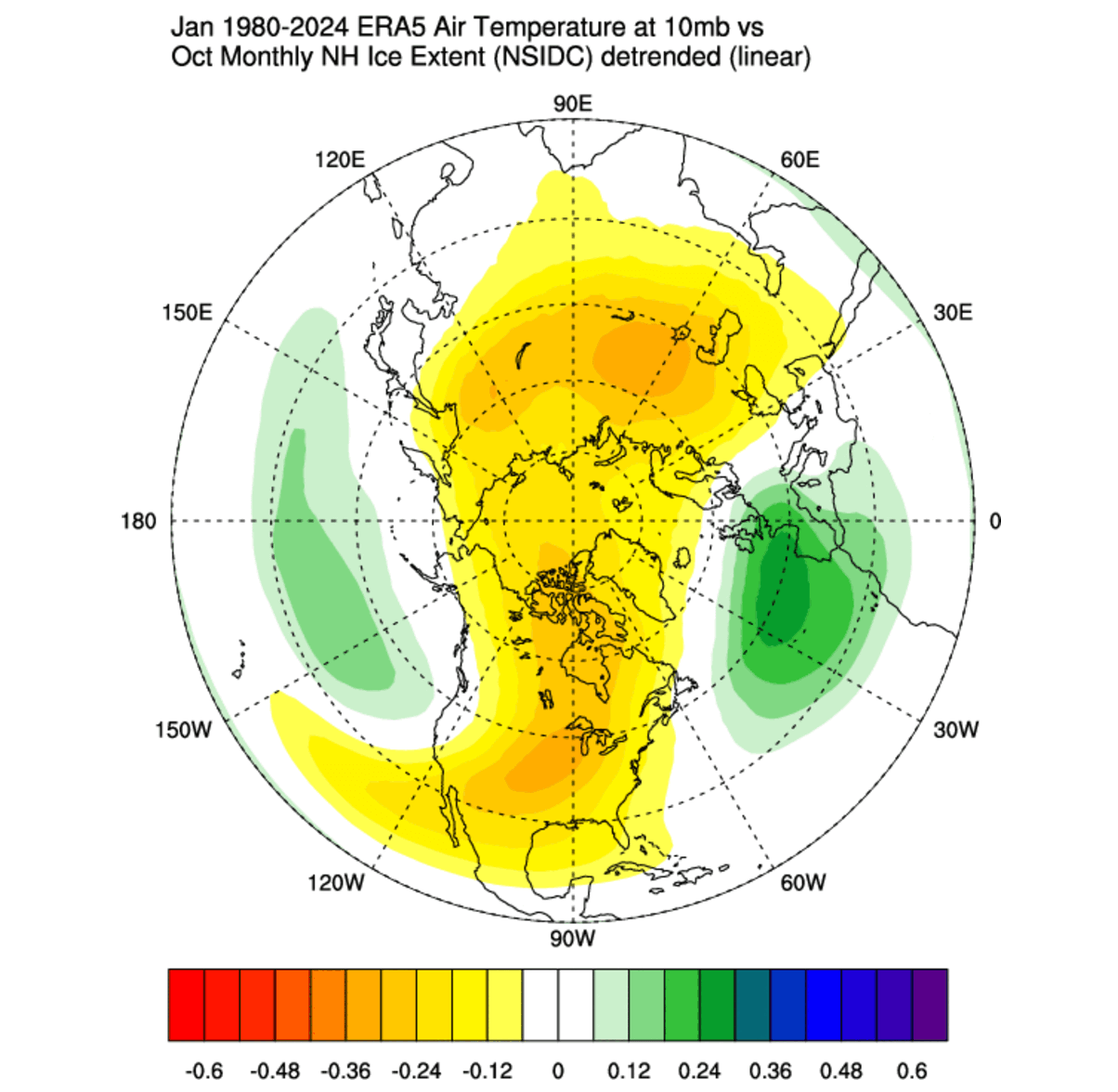
If we look at the very early long-range predictions for the Polar Vortex strength, we can see some early indications for a weaker circulation in the stratosphere in early winter. This is something to be expected, as long-range predictions do calculate the forecast based on the latest state of the oceans and the atmosphere.
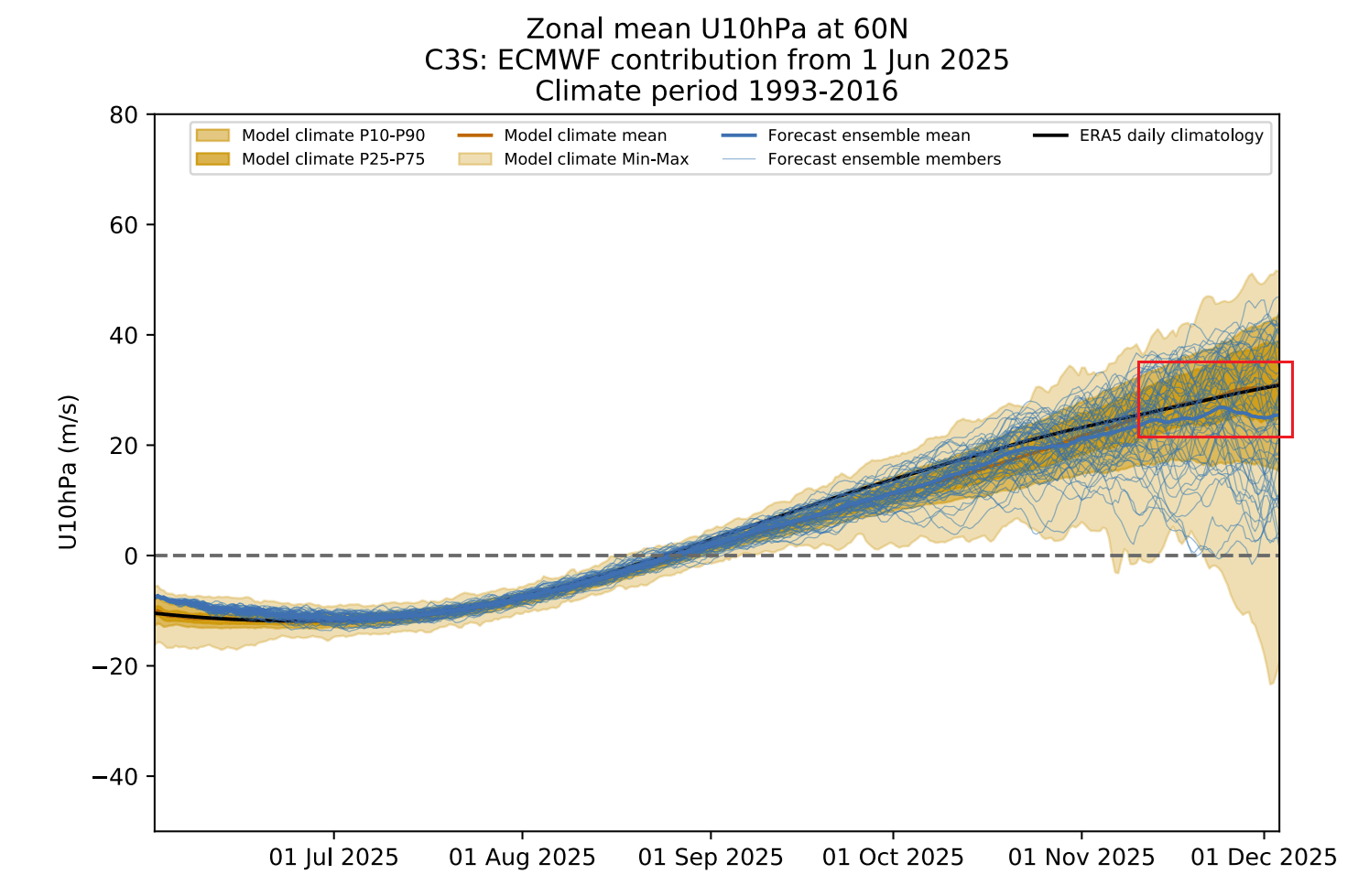
What this all leads to is a higher chance for a stratospheric warming event and a full collapse of the Polar Vortex, which can fully unlock the cold winter potential.
COLLAPSE OF THE WINTER POLAR VORTEX
A proper Polar Vortex collapse event (Sudden Stratospheric Warming) basically means a strong temperature and pressure rise in the Stratosphere and a resulting collapse of the Polar Vortex circulation.
One major condition must be met for a disruption event to be classified as a Sudden Stratospheric Warming event or a full collapse. The stratospheric polar winds, which are westerly in Winter, must be reversed to easterly.
One such major event was recorded this March. Below you can see the temperature in the mid-stratosphere as the Sudden Stratospheric Warming event was in progress. It shows the stratospheric high-pressure system (H) taking over the polar regions and splitting the Polar Vortex into two separate cores (L), breaking it down fully.
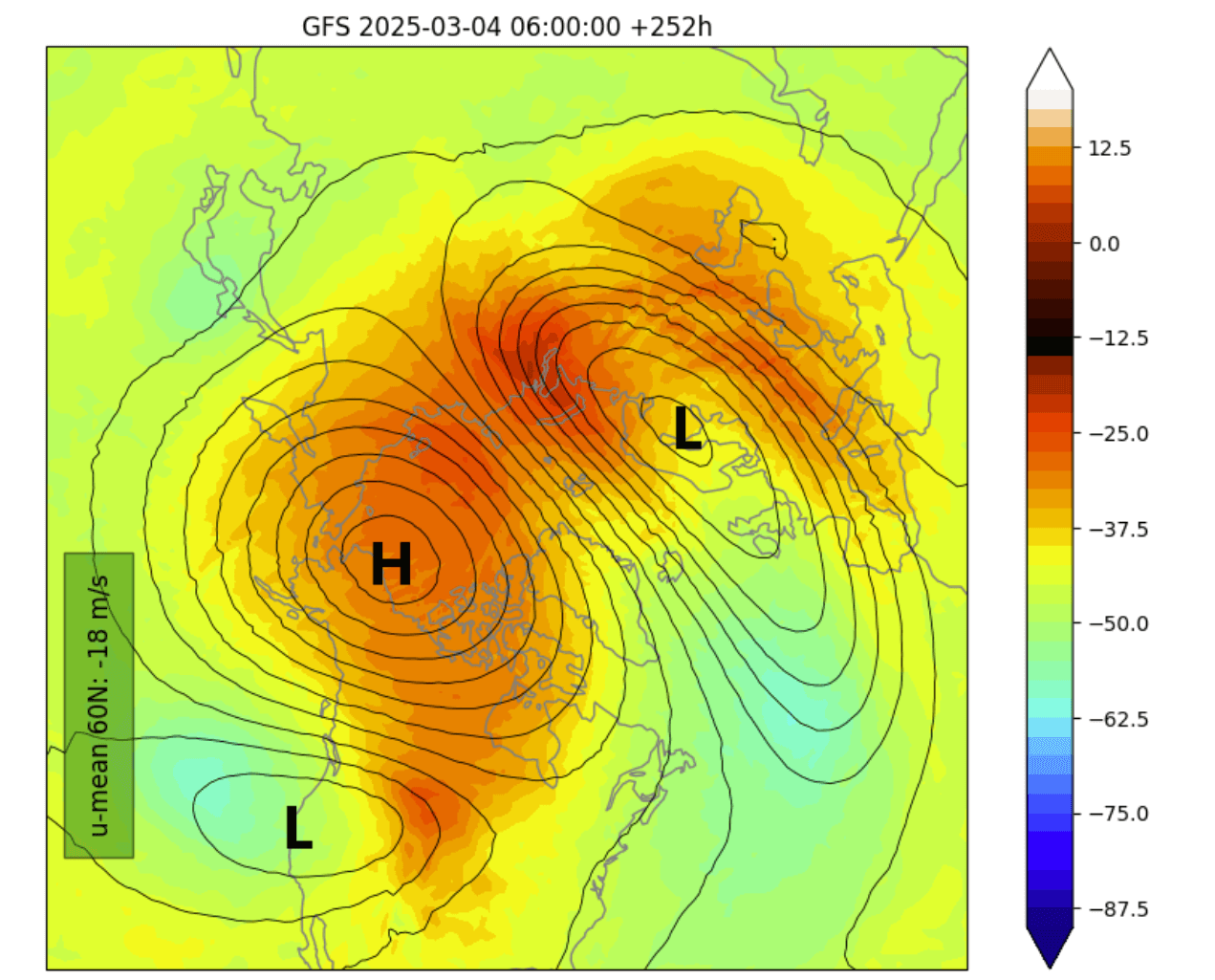
We produced a video below that shows the stratospheric Polar Vortex spinning over the Northern Hemisphere and collapsing due to a strong Stratospheric Warming event in March. You can see how rapidly the Polar Vortex collapsed under a sudden warming event.
But what does such an event mean for our everyday weather at the surface? Well, you have to understand that it can take some time for the effects from the Stratosphere to reach the lower levels. That is why we usually look at the 0-30 day periods after such an event to identify the resulting weather changes.
First, we can look at the surface pressure changes following a Polar Vortex collapse event. The stratospheric warming effect tends to create a high-pressure area over the polar regions as it moves into the lower levels of the atmosphere.
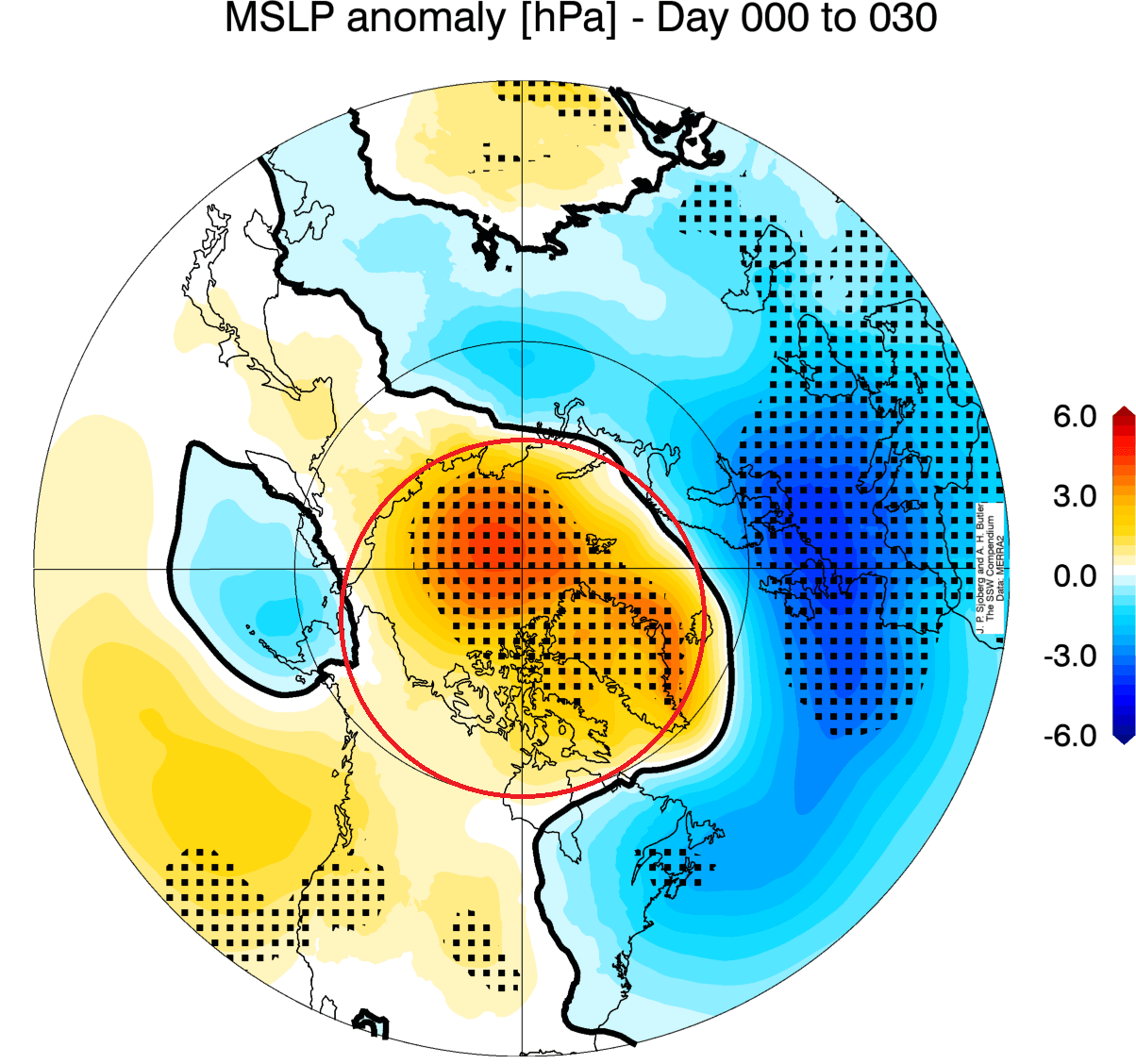
This means that as the pressure rises over the pole, the jet stream gets disrupted. That unlocks the cold air out of the pole and releases it down towards the south.
Below is the average temperature of 0-30 days after a Polar Vortex collapse event. This shows that most of the United States and northern and central parts of Europe are typically colder than normal after an SSW event. But note: Each stratospheric warming event is different and does not automatically mean a strong winter pattern.
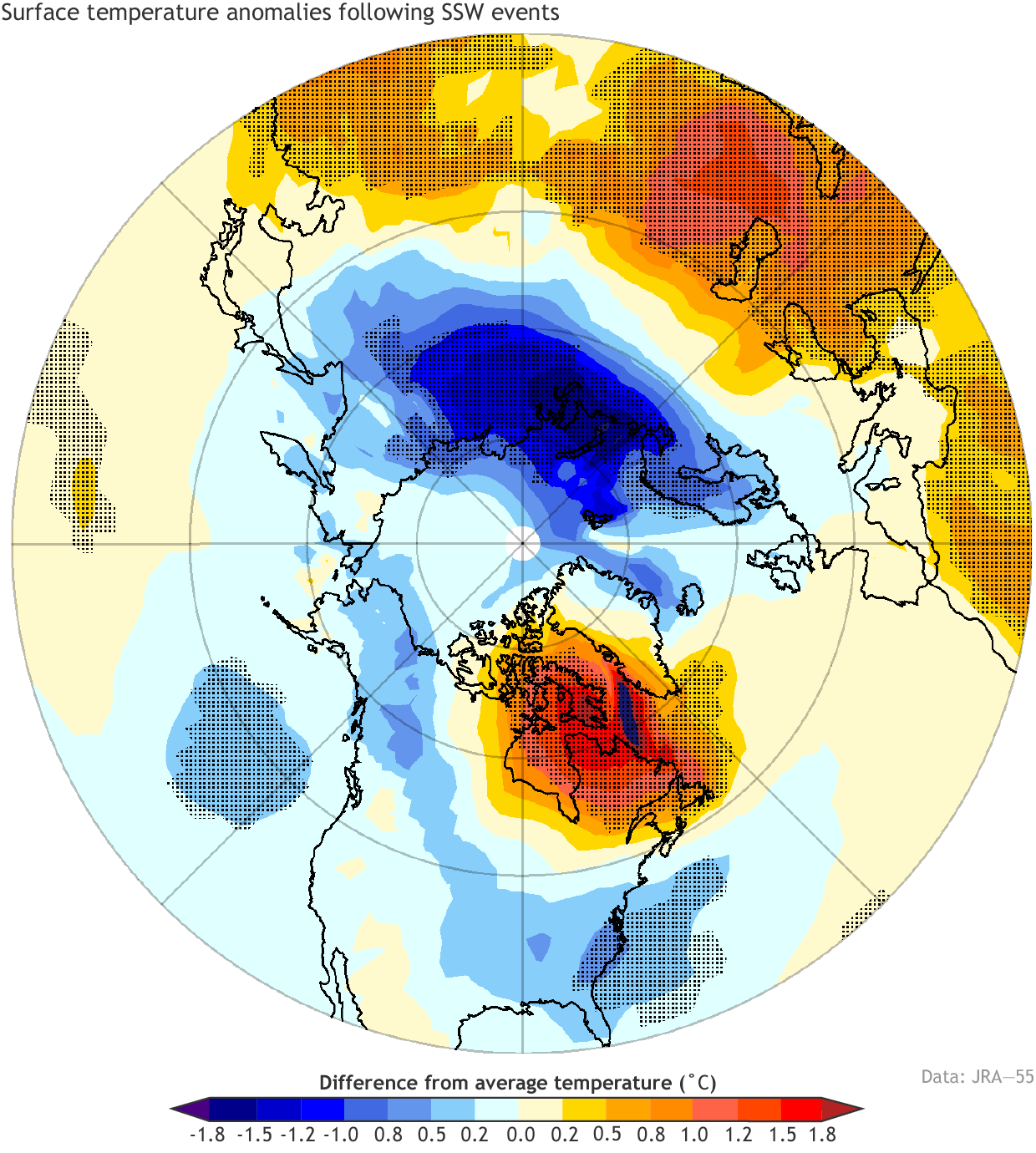
Looking at the snowfall after SSW events, we can see above-average snowfall over much of the eastern United States. the Midwest, and Europe. This is because of the pressure changes after a stratospheric warming, the colder air has an easier path towards the south and into these regions.
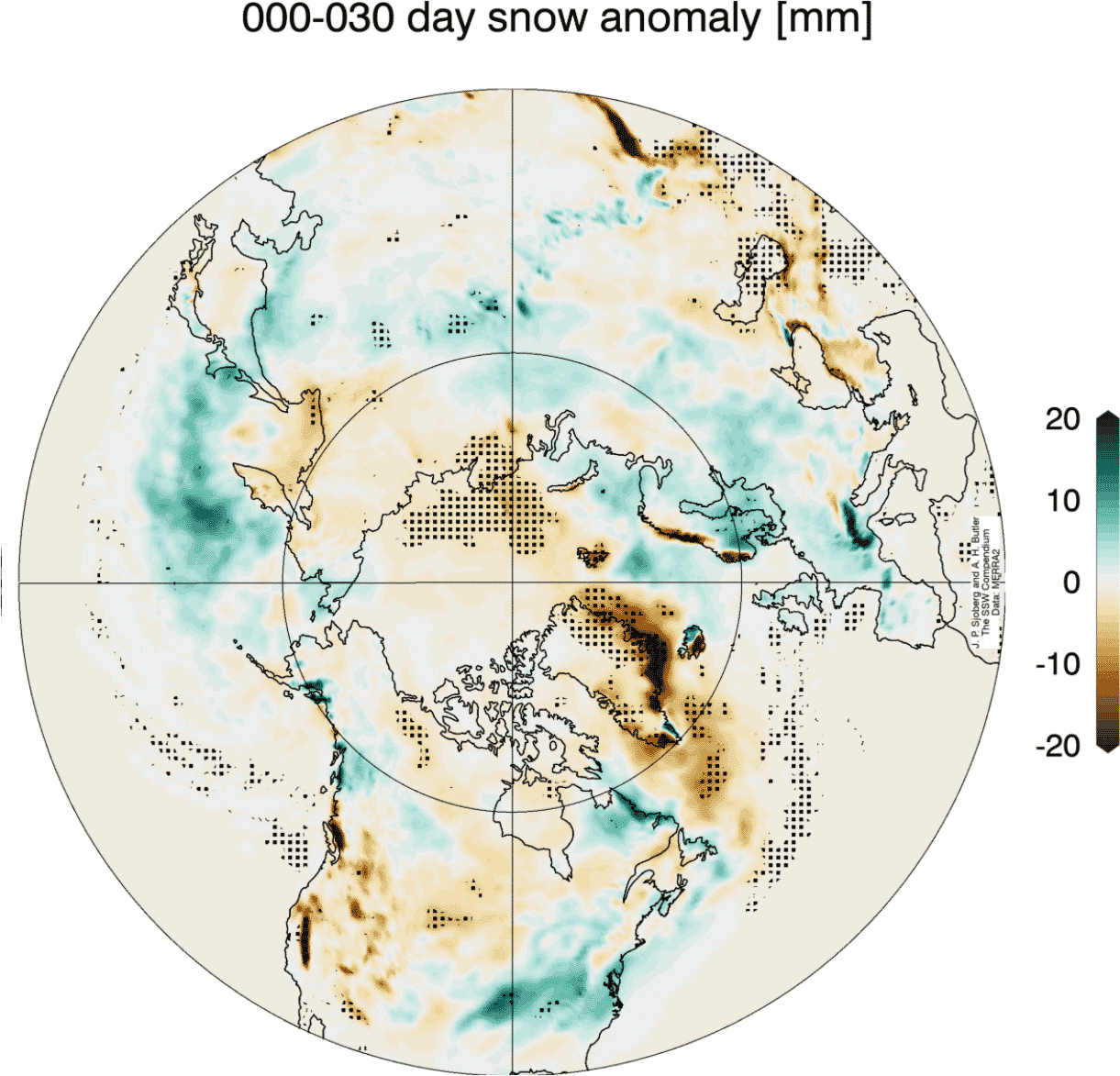
As you can see, a weak Polar Vortex can significantly change Winter weather in the United States, Canada, and Europe. For this reason, we closely monitor the weather patterns and all activity surrounding the Polar Vortex.
With strong signs emerging for a weak Polar Vortex in 2025/2026, the likelihood increases for more colder winter days and snowfall over the United States, Canada, and parts of Europe.
We will keep you updated on the global weather pattern development, so bookmark our page. Also, if you have seen this article in the Google App (Discover) feed, click the like (♥) or the star button there to see more of our forecasts and our latest articles on weather and nature in general.